Destination Indonesia
Indonesia has a world of wonders that makes the country wonderful to visit. The beauty of scenic natural landscapes blended with various unique culture of its people. Enjoy the untouched beaches, mountains, lakes, and many more pleasing destinations, as well as the magnificent city skylines throughout the country.
German Tourists to Indonesia, 2012-2017
| Origin Country | 2012 | 2013 | 2014 | 2015 | 2016 | 2017 | 2018 |
|---|---|---|---|---|---|---|---|
| Germany | 148,146 | 168,110 | 184,815 | 197,937 | 231,694 | 252,800 | 273,800 |
| Other Countries | 7,896,316 | 8,634,019 | 9,250,596 | 9,289,808 | 10,338,593 | 13,787,000 | 15,532,400 |
| Total | 8,044,462 | 8,802,129 | 9,435,411 | 9,487,745 | 10,570,287 | 14.039,800 | 15,806,200 |
| % of total | 1.84% | 1.91% | 1.96% | 2.09% | 2.19% | 1,80% | 1,73% |
Bali is the main destination of Indonesia Tourism. In 2016, the Government of Indonesia through the Ministry of Tourism has developed other 10 Priority Tourism Destination after Bali. Information about the eleven Priority Tourism Destinations is as follow
1. Bali
Also known as the Land of the Gods, Bali appeals through its sheer natural beauty of looming volcanoes and lush terraced rice fields that exude peace and serenity. It is also famous for surfers’ paradise.
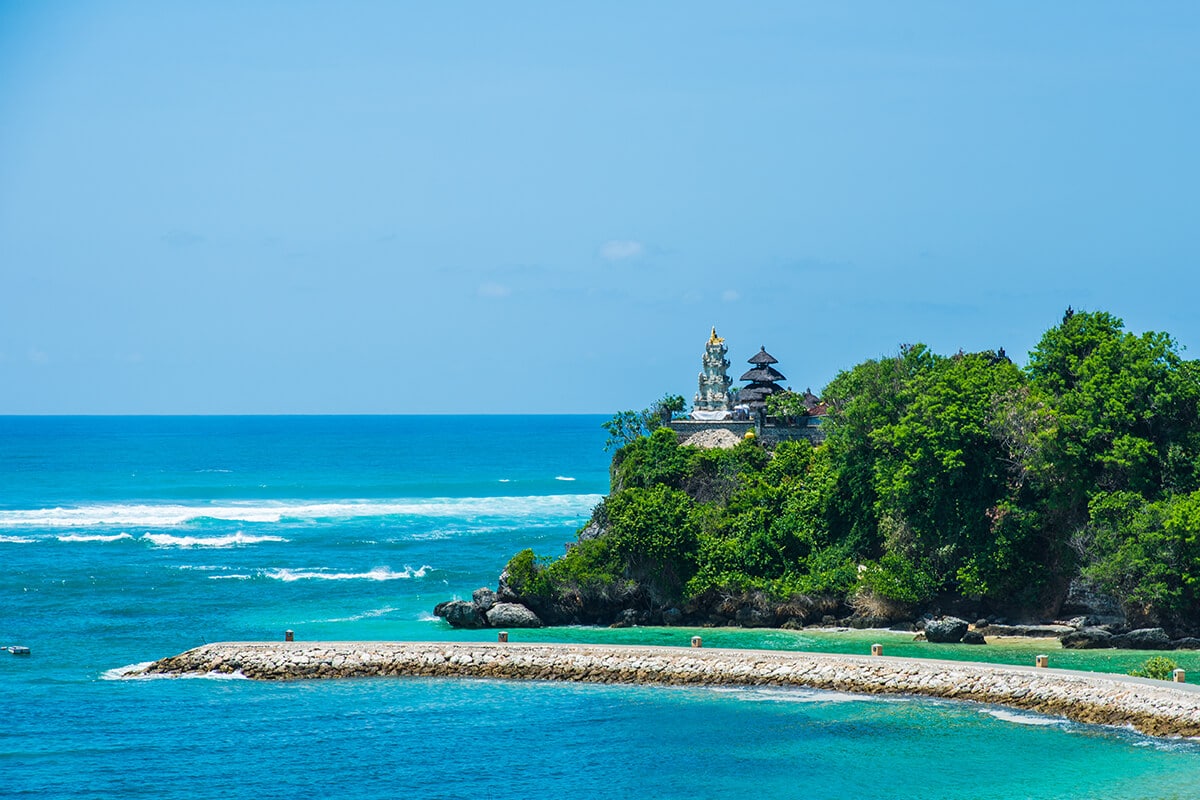
Bali enchants with its dramatic dances and colorful ceremonies, its arts, and crafts, to its luxurious beach resorts and exciting nightlife. And everywhere, you will find intricately carved temples.
There are thousands of gift shops in Bali. From Denpasar to Ubud, you’ll find many things you’d like to bring back home. Balinese signature souvenir range from delicious snacks and beverages, to the exquisite handcrafted goods like Tenun Bali.
If you are thinking of bringing home souvenirs, your best bet is the souvenir market at Sukowati, where you may be overwhelmed by choice.
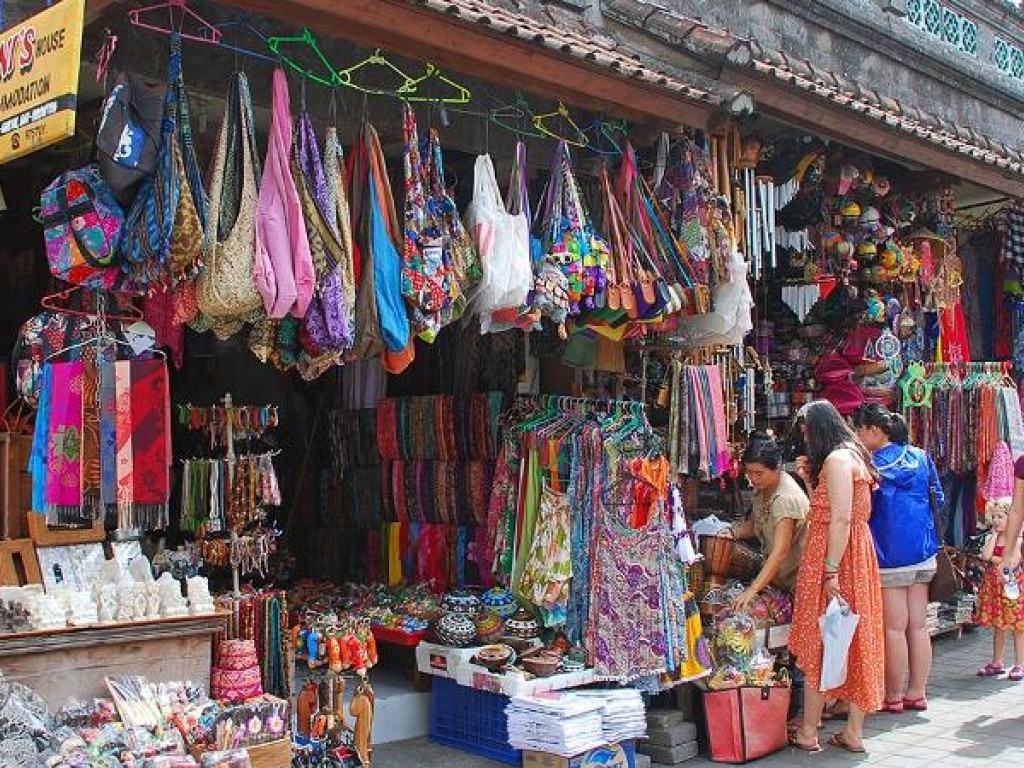
Most of the starred hotels are located near the beach. Some even have their own private spots at certain beaches, where you can splurge on exclusive privilege. You can find them easily at popular spots like Kuta, Sanur, and Seminyak.
Kuta has a large variety of boutiques and shops, selling everything from bright T-shirts, surf-wear, flip-flops to creative trinkets. If you wish to buy dried foodstuffs, Bali coffee is the most aromatic one. You may also want to buy aromatherapy essential oils to sprinkle your bath with.
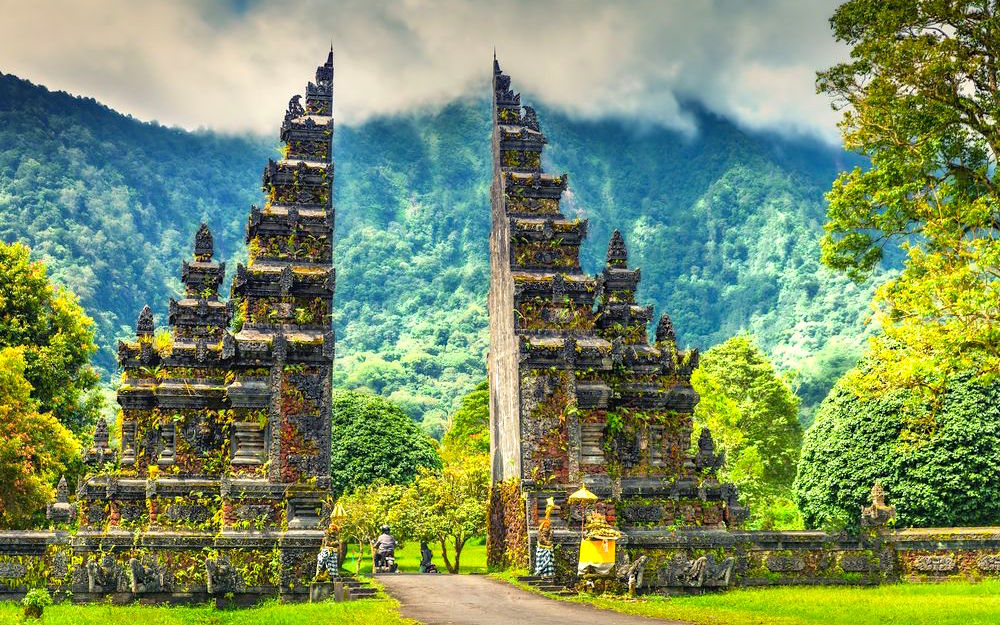
As Bali is located 8 degrees south of the equator, you will find the climate to be the typical tropical, warm and humid all year round with two main distinctive seasons: Dry Season and Rainy Season.
Some of the areas around Bali’s central mountains (volcanoes) have several peaks over 3,000 meters above sea levels. Up here the temperatures are considerably cooler, and there is much more rainfall than in the coastal areas.
Bali’s white beaches are certainly a favorite destination for family holidays. There are a variety of watersports available, such as banana boats, parasailing or jet skiing, go swimming or you may just linger and enjoy good sunbathing by the sea.
Kuta is one of the most well-known beaches in Bali. Along with this stretch are an array of hotels, restaurants, shops, and cafes. In the evenings the area throbs to the beat of disco music.
For a quieter evening enjoy the beach at Jimbaran, a popular spot to eat fresh barbecued seafood. Seminyak is home to five-stars International hotels and luxurious accommodation studded with fancy dining spots. Sanur Beach also dotted with hotels and restaurants. You can also visit Nusa Dua, where more private beaches front super deluxe hotels.
Surfers love the waves at Nusa Lembongan near Nusa Penida. These islands are a 45 minutes boat trip from Nusa Dua or from Sanur. At Nusa Penida’s southwestern coast are the Manta Point and the Malibu point where divers can swim with Travally, big rays, and even sharks. Kelingking beach, Atuh beach and Broken beach among the most famous spots of Nusa Penida.
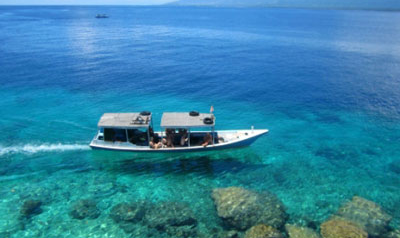
The best dive spots can be located at Menjangan island, with its reef flat, anchor wreck, eel garden and caves to explore. Located in the western part of Bali, you can enjoy the rare sight of deer swimming near the beach. Pemutaran is also famous for its diving activities renowned for reef conservation.
Try exploring or trekking the West Bali National Park, where you may get up close and personal with Bali’s rich flora and fauna, such as Jalak Bali or the Bali Starling.
Bali offers first-class adrenaline pumping white water rafting down the spectacular Ayung River by Ubud. If you enjoy cycling, Ubud and its surrounding is a wonderful town to bike around. There are also good cycling paths at Uluwatu in the south.
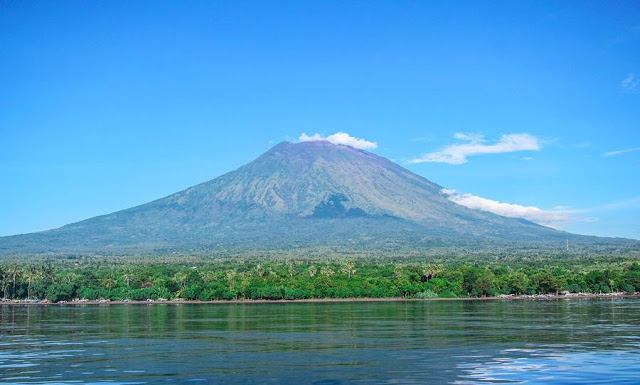
Mountain climbers may want to climb up Gunung Agung. Begin your ascend from behind the temple or through the village of Sebudi. However, make sure to ask permission first from the temple authorities, as the Balinese religion prescribes that no one may stand higher than the sacred temple especially when ceremonies are being held.
Another mountain for your adventurous hike is the beautiful Mount Batur, that overlooks the serene Lake Batur in Kintamani.
The Kecak dance is staged most dramatically in the open air settings on a cliff, by Uluwatu temple. Experience the unforgettable moments where the sun slowly lowering in the sea over the horizon beyond this beautiful temple serenade with Balinese most iconic art performance. The Kecak dance tells the story of Ramayana wherein prince Rama’s wife, Sita, is abducted by the ogre Rahwana.
After exploring hours are done for the day, you can surrender in total relaxation and experience the best of Balinese spa, located all over Bali. Balinese spa products are made with fine quality local ingredients and are perfect for you to also bring home as a souvenir!
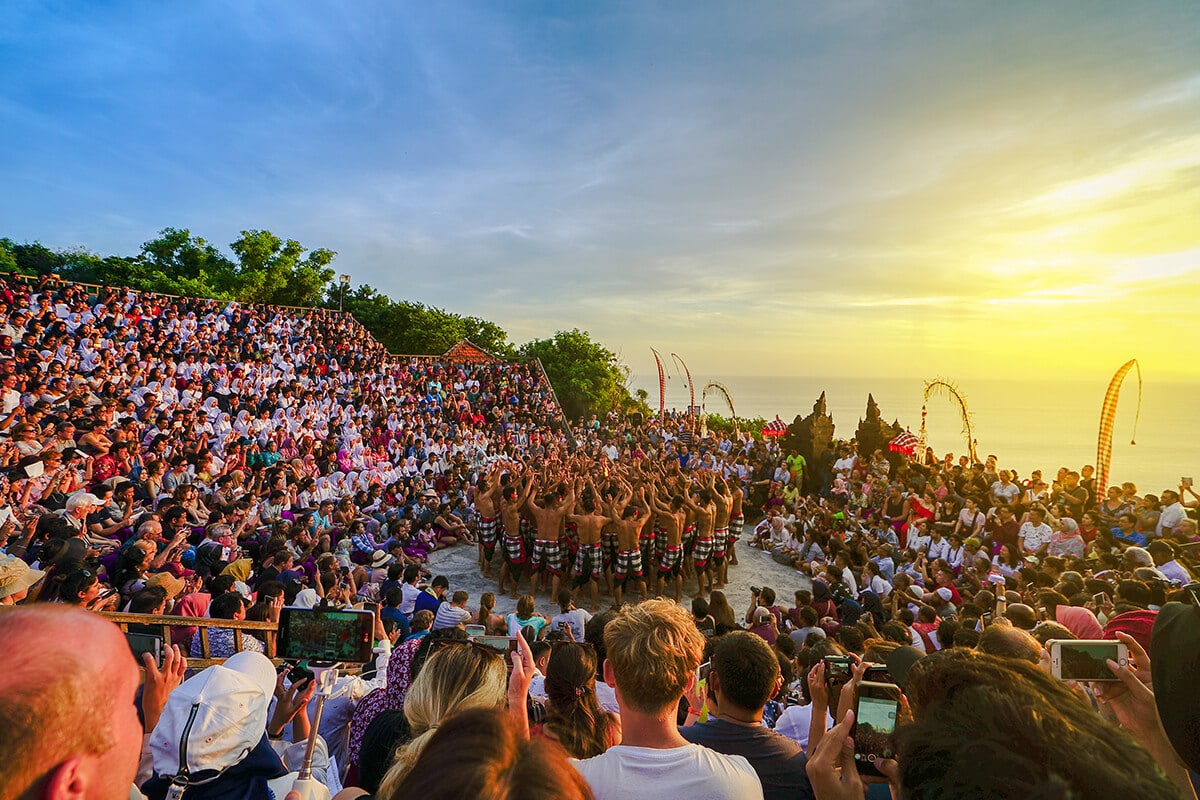
2. Danau Toba (Lake Toba)
Lake Toba is one of the awesome natural wonders of the world. This enormous crater lake has an island almost the size of Singapore in its centre. At over 1,145 square km, and a depth of 450 meters, Lake Toba is actually more like an ocean. This is the largest lake in Southeast Asia and one of the deepest lakes in the world.

Toba is a place to come and sit back, relax and absorb some beautiful pristine scenery. As you sit and take in the view of the picturesque mountains set against the cool clear lake, you will feel the worries of the world melt away. As the lake sits 900 meters above sea level there is a cooler climate here making a refreshing break from the heat, humidity and pollution of the city.
3. Tanjung Kelayang
Flanked by the Gaspar and Karimata Strait, off the eastern coast of Sumatra, Belitung is a beautiful island blessed with magnificent landscape, divine beaches, and outstanding scenery. The coast of Tanjung Kelayang, in the
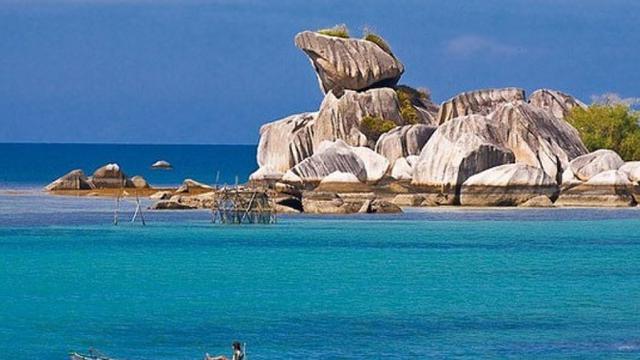
northern part of the island, is the heart of Belitung’s splendor. This tropical wonderland is truly a place where you can get a glimpse of what paradise would be like.
Once a secluded getaway, Tanjung Kelayang is now evolving into a vast integrated resort following the government’s policy that designated the area as a 324.38 hectare Special Economic Zone (SEZ). Here, pearly white sandy beach, unsullied sea, and nothing but tropical wonder await. Moreover, what makes it truly unique is the fascinating boulders formation that beautifully decorate the beach. These huge slabs of granite extend to the sea and they seem to have been strewn here by the hands of mother nature. Some of these boulders formation even resemble animal silhouettes, notably the shape of a swallow or kelayang, hence the name.
Completing the splendor, thematic hotels and exclusive villas are continuously being developed to cater all your needs. An integrated transportation system will allow you to explore every inch of the area with ease. Hopping to nearby islands will be effortless. Aside from its amazing natural wonders, you will also get the chance to explore Belitung’s unique culture and experience the friendliness and warm hospitality of its local people.
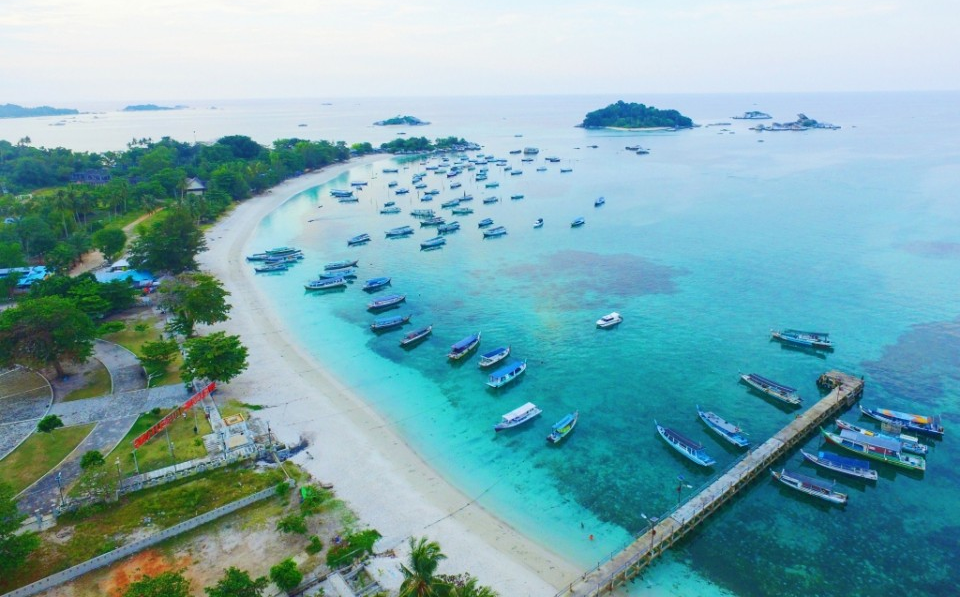
Prepare yourself to be pampered with all kinds of tropical splendor. A trip to Tanjung Kelayang will definitely give you a vacation experience like you never had before.
The most convenient way to explore Tanjung Kelayang is by renting a car. For an alternative, there are also motorcycle rentals. If you wish to take a taxi, be sure to take the licensed ones, because there are taxis that don’t use meter. If you wish to embark on an island hopping adventure around the area, you can charter a fishing boat from local fishermen. However, for a more convenient way, you can arrange your trip with a tour operator or travel agent.
4. Tanjung Lesung
Located on Java’s most western coast in the district of Pandeglang in the province of Banten, the Tanjung Lesung resembles the lesung, which in the local Sundanese language means the receptacle for rice pounding. Tanjung Lesung is a developing integrated beach resort for recreation and hotels overlooking Mt Anak Krakatu, all that is left of the once mighty Krakatau volcano. This huge
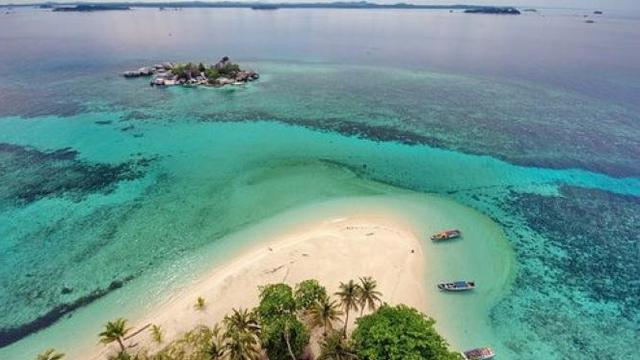
1,500 hectares area of Tanjung Lesung has been developed by the Banten West Java Tourism Development Corporation (BWJ) since 1996, patterned after the famed Nusa Dua Resort in Bali. The resort is envisaged to contain top range hotels and restaurants, a convention hall, a number of golf courses, marina and theme park.
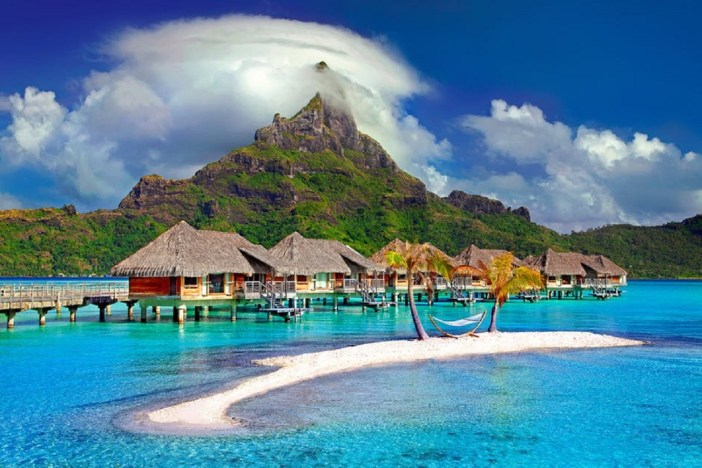
Today, Tanjung Lesung offers a perfect place to lay back and immerse oneself in the beauty of nature found along the vast stretch of soft white sandy beaches, clear and calm blue waters, and fresh tropical breezes. The 15 km shoreline is the perfect place for various beach activities such as beach volley, beach football, or just lie down under the indulging sunshine.
The magnificent scenery of Tanjung Lesung also lies beneath the surface. Beautiful coral reefs, decorated with colorful fish and seafloor dwellers make this a perfect spot for snorkeling and Diving. For those who enjoy the sensation of reeling in the big fish, there are many fishing spots that awaits off the coast of Tanjung Lesung.
5. Kepulauan Seribu
If you’re longing to have a short escape from the busy side of Jakarta, Kepulauan Seribu or the Thousand Islands is the perfect place for you! There are 108 islands in Kepulauan Seribu, located in the northern coast of Jakarta, but only 11 of those are inhabited and 36 may be used for recreation.
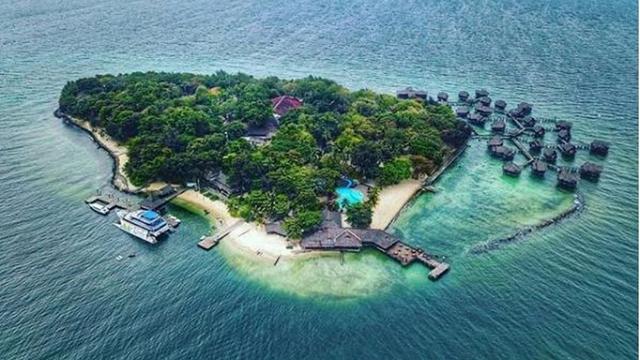
You can go island hopping and visit some of the most famous spots in Kepulauan Seribu, or you can go swimming, snorkeling, diving, or just laying around all day long in these laid back islands. Kepulauan Seribu’s Marine National Park is the heart of this archipelago. The park consists of a few islands, such as Semak Daun, Gosong Pramuka, Karang Lebar, KarangBalikLayar and Kotok Island. There are around 19 diving spots with amazing underwater life in this area!
There are also the historical islands, which comprise of Onrust, Cipir, Kelor, and Bidadari Island. You can stroll around Onrust Island and stumble upon archaeological remains. The exotic Macan Island is an eco-friendly escape that you would not want to miss; and how can you not visit the famous Love Bridge on Tidung Island.
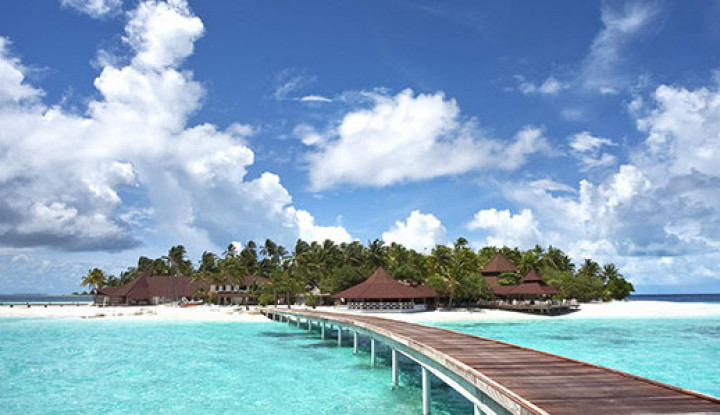
The bridge is an iconic structure that connects TidungBesar with Tidung Kecil Island. You can ride a bicycle around the island as the friendly locals greet you. Pari Island is one of the most populated island, yet it still holds a hidden gem, such as the unsullied Perawan Beach, home to a diverse coral reefs and breathtaking marine scenery. Last but not least, is the Putri Island, located furthest from Jakarta. You can walk in an underwater tunnel, where you get to see the wonderful life of sea creatures!
6. Taman Wisata Candi Borobudur
Located on the island of Java, the magnificent Borobudur temple is the world’s biggest Buddhist monument, an ancient site widely considered to be one of the world’s seven wonders. The temple sits majestically on a hilltop overlooking lush green fields and distant hills. Built in the 9th century during the reign of the Syailendra dynasty, the temple’s design in Gupta architecture reflects India’s influence on the region, yet there are enough indigenous scenes and elements incorporated to make Borobudur uniquely Indonesian.
It covers an enormous area, measuring 123 x 123 meters. The monument is a marvel of design, decorated with 2,672 relief panels and 504 Buddha statues. The architecture and stonework of this temple has no equal. And it was built without using any kind of cement or mortar! The structure is like a set of massive interlocking Lego blocks held together without any glue.
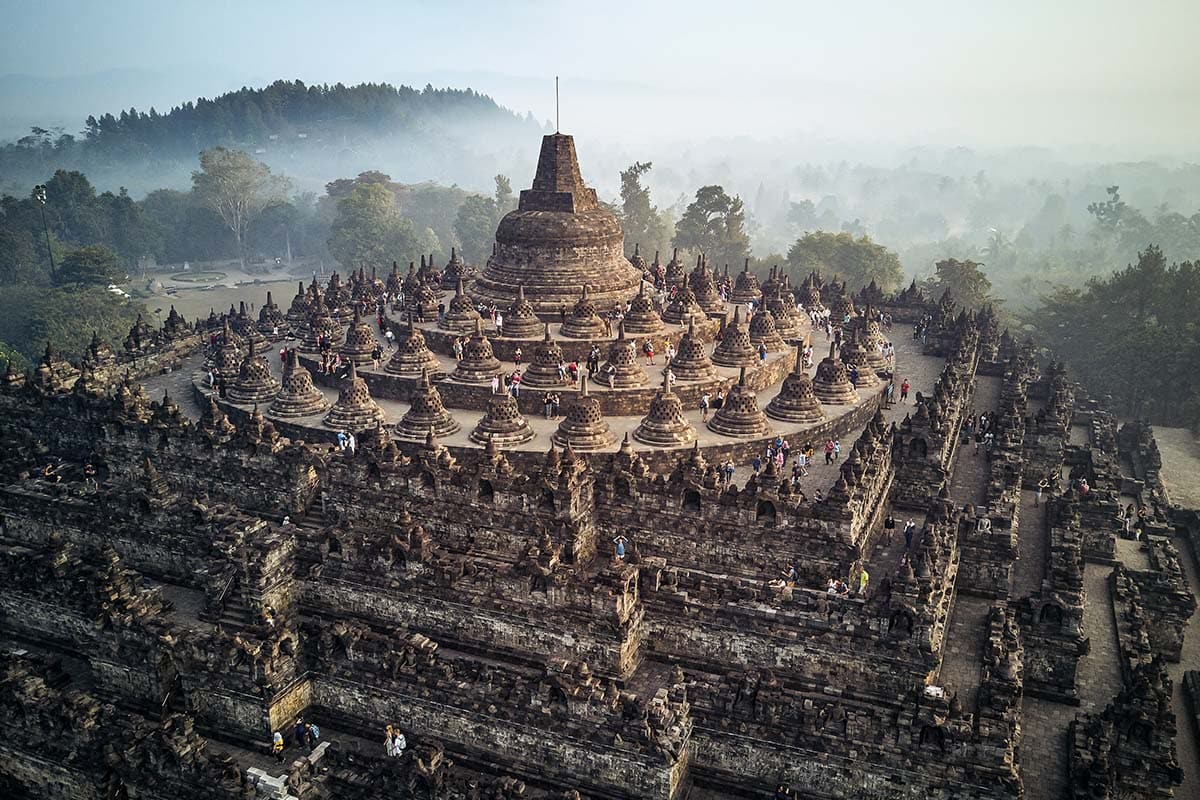
The temple has remained strong even through ten centuries of neglect. It was rediscovered in 1815, buried under volcanic ash. In the 1970’s the Indonesian Government and UNESCO worked together to restore Borobudur to its former majesty The restoration took eight years to complete and today Borobudur is one of Indonesia and the world’s most valuable treasures.
The temple is decorated with stone carvings in bas-relief representing images from the life of Buddha. Commentators claim that this is the largest and most complete ensemble of Buddhist reliefs in the world, unsurpassed in artistic merit.
The best way to explore this site is on foot. As you climb to the top of this magnificent temple you will marvel at the intricate detailed stone carvings displayed on the temples walls. You will certainly miss a great experience if you visit this enormous temple without learning about its history and importance which are captured on its many reliefs.
Guides are available for around Rp 50,000. This is a wise investment as a guide will be able to walk you around the site and explain the history of the temple, beginning with its construction during the Syailendra dynasty. The stone carvings attached to the temple
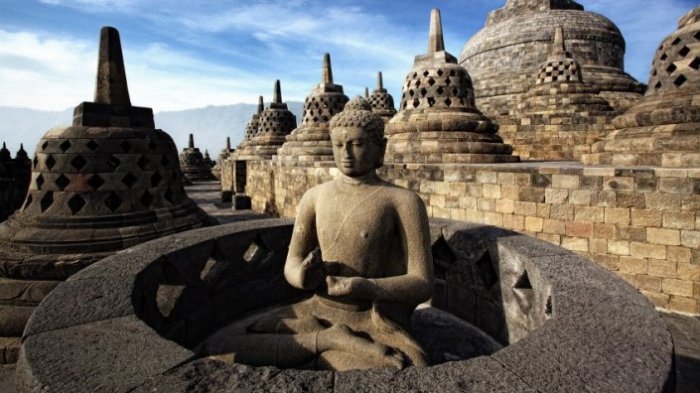
display legends and stories which have great philosophical significance. For visitors with children, don’t miss the massive green grass area surrounding the Borobudur site.
You may choose to walk through Green Park from the entrance. Many vendors will offer you souvenirs and other knick knacks as you walk through this area, however there are regulations in place to prevent them from disturbing visitors.
7. Taman Nasional Bromo Tengger, Semeru
The Bromo Tengger Semeru National Park covers a massive area of 800 square km in the center of East Java. For anyone with an interest in volcanoes, a visit to

the park is a must. This is the largest volcanic region in the province. Visit the park and see the plumes of smoke coming from Mt Semeru, an active volcano which rises 3,676 meters above sea level.

Experience the remarkable Tengger Caldera, Java’s largest, with its 10 km barren desert-like sea of sand. Within the caldera rise the deeply fissured volcanic cones of Batok and Bromo, the latter is still active with a cavernous crater from which smoke blows skyward. Temperatures at the top of Mt Bromo range about 5-18 degrees Celsius. To the south of the park is a rolling upland plateau dissected by valleys and dotted with several small scenic lakes, extending to the foot of Mt Semeru.
8. Pantai Mandalika
Along the south coast of the beautiful Lombok island lies a long and wide stretch of beautiful white sand beach facing the glistening Indian Ocean. On the background are lush green hills and mesmerizing landscapes. This is Mandalika, once a surfers’ best kept secret, now it has emerged as the island’s capital of leisure. Mandalika shouts heaven from all of its enchanting corners.
The special tourism economic zone boasts vibrant bars and nightclubs, thrilling racing circuits, exciting water parks, luxurious hotels and resorts, fascinating golf courses, rejuvenating spas, and plenty more; there’s everything for everyone at this 1,250 hectare paradise. The tourism industry in Mandalika is equalling its neighboring island, Bali. Mandalika is also a melting pot of tourists from all parts of the globe. Here, the tourism industry fused seamlessly with the unique and colorful culture of the local people that is still well preserved for generations.
Mandalika is also conveniently located near some of Lombok’s most outstanding beaches. These include Tanjung Aan, Kuta, Gerupuk, Serenting, and Seger Beach. From the top of the Merese Hill and Batu Payung Beach, you are presented with some of the most amazing panorama of Lombok. All kinds of fun water sports activities awaits at Kuta Beach. Those who enjoy swimming, surfing, and fishing can head to Gerupuk Beach, while those who prefer peace and serenity can head to Serenting Beach. For a one of a kind cultural experience, head down to Seger Beach during the annual tradition of Bau Nyale Ritual and join in the local festivity you won’t find elsewhere.
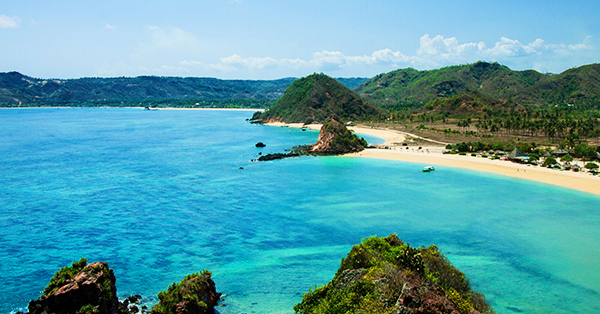
Blessed with a beautiful nature and enhanced by the hands of professionals, Mandalika is designed to make your dream vacation a reality. With all its exceptional splendors, a trip here will be unforgettable and will make you long for more.
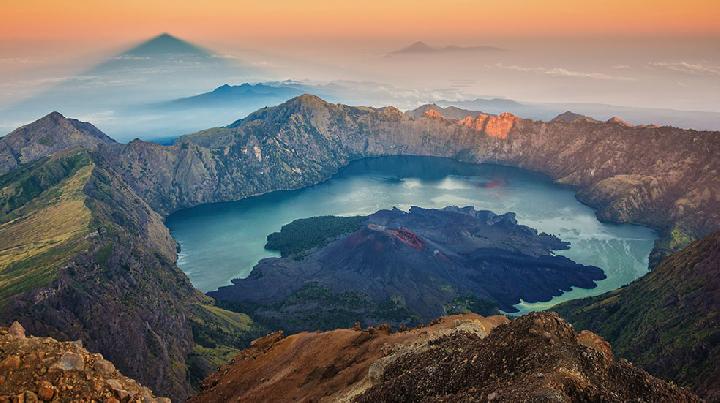
With divine beaches, the majestic Mt Rinjani and spectacular marine life to discover, the island of Lombok in West Nusa Tenggara has no shortage of attractions both in and out of the water. It’s no wonder that Lombok become one of the most popular destination in West Nusa Tenggara.
Challenge yourself with a trek up steep volcanic peaks. Hire a bike and cycle through lush evergreen rice paddies. Whichever way you choose to spend your time you won’t be disappointed with the spectacular natural beauty on offer here.
Lombok Island is separated by the Lombok strait from Bali Island in the west and by Alas strait in the east from Sumbawa Island.
The Sasak people are the dominant ethnic group living in this island, which also consist of 5 regions: North Lombok, Central Lombok, East Lombok, West Lombok and Mataram city, the capital of West Nusa Tenggara.
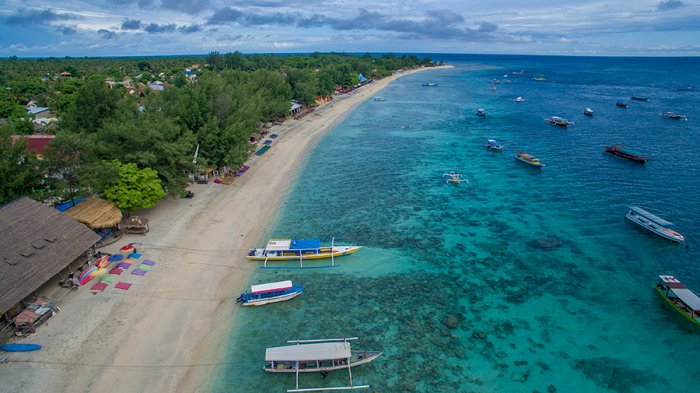
North Lombok is where you can embark on the great hike to Mount Rinjani and linger until the sunset at Gili’s beautiful beaches.
Mount Rinjani is one of the highest volcano in Indonesia, with its summit rising to 3,726 meters above sea level. The Segara Anak Crater Lake located on top of the volcano, is one of the scenic view you should stop by and marvel at!
Among more than 20 gilis – local name that means ”small island” in Sasak language – three stood out to be the hot spot destination : Gili Trawangan, Gili Meno and Gili Air.
Gili Trawangan or Gili T, is where travelers flock to enjoy a laid back atmosphere during day light and still are up to enjoy moonlit parties all night by the beach. You can also enjoy a great scuba dive and circle the island on bicycle to catch the most incredible sunset!
Gili Meno is defined by long stretch of pearly white beaches that will give you a secluded feel. Famous for honeymooners destination, the island provide accommodation ranging from unique bungalows to luxurious resorts overlooking amazing panorama.
Gili Air is a cheerful mix of the two vibes, where you can still enjoy parties in hip hang outs or succumb at a peaceful nook and just enjoy the ocean breeze. Families love to travel to Gili Air to explore the island on the horse drawn cart or just swimming in the low tides before sun down.
Central Lombok is where the lovely beaches are situated. Kuta Beach, Tanjung A’an, and Mawun Beach are just a few on the list. Don’t miss out to brush up your wave riding skills in the splendid Selong Belanak Beach, or make way to Merese Hill and enjoy the view.
Here you can also visit the traditional villages and join the locals of Sasak tribe to experience their daily life in the weaving village of Sade and Rambitan. You may learn a thing or two from the wonderful women with meticulous weaving skills that produces fine quality textiles.
You can get across the sea to Sumbawa Island from the harbors in East Lombok. If you
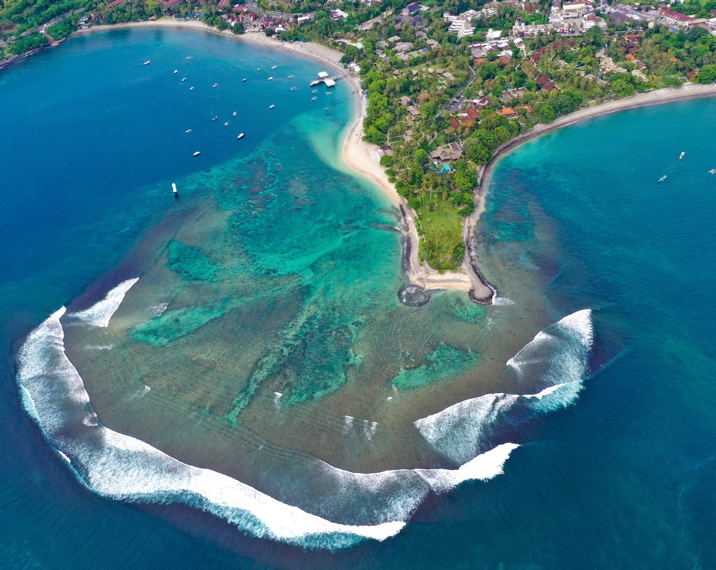
love exploring something new, you may find the black sand beach of Obel-Obel to be captivating!
In West Lombok, you can linger in Senggigi beach and discover the wild life at the Monkey Forest in Pusuk Village, right at the border between North and West Lombok. Just be careful with your belongings and keep them out of the monkey’s reach.
Mataram is the center for government and industry. It consist of the old town district of Ampenan, Cakranegara as the commercial district and Mataram city as office district.
Make time to visit the West Nusa Tenggara Museum, Mayura Garden and Narmada Park to find more stories about the island.
For the adventurous spirit, you can explore more of its south coast like the famous Tangsi ‘Pink’ Beach in further south east, with pretty corals making the shore looked blushed. Trek the path to find the amazing Senaru Waterfalls and Benang Kelambu Waterfalls for a soothing sight.
9. Labuan Bajo
The town of Labuan Bajo is located some 4 hours boat ride from the island of Komodo
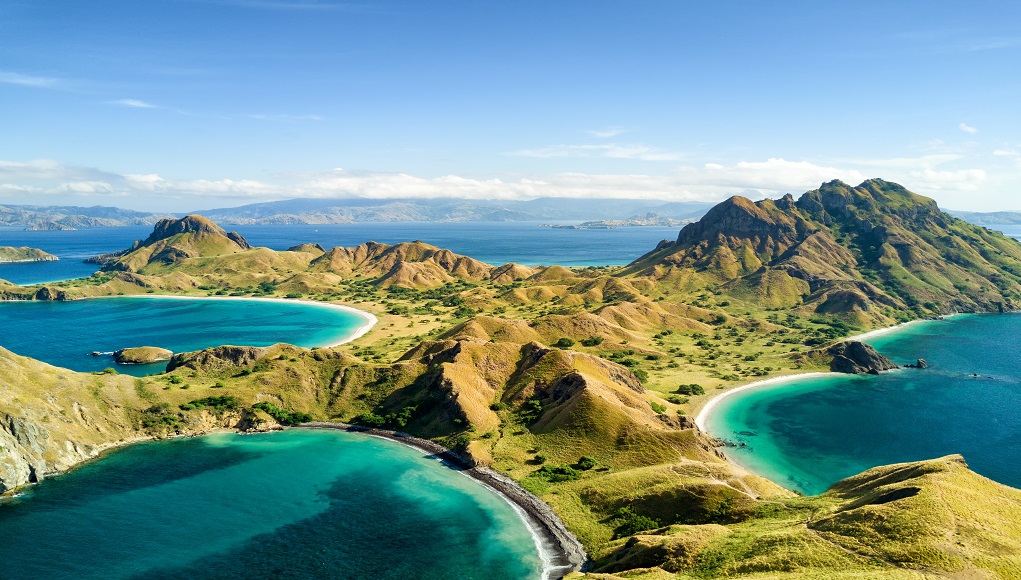
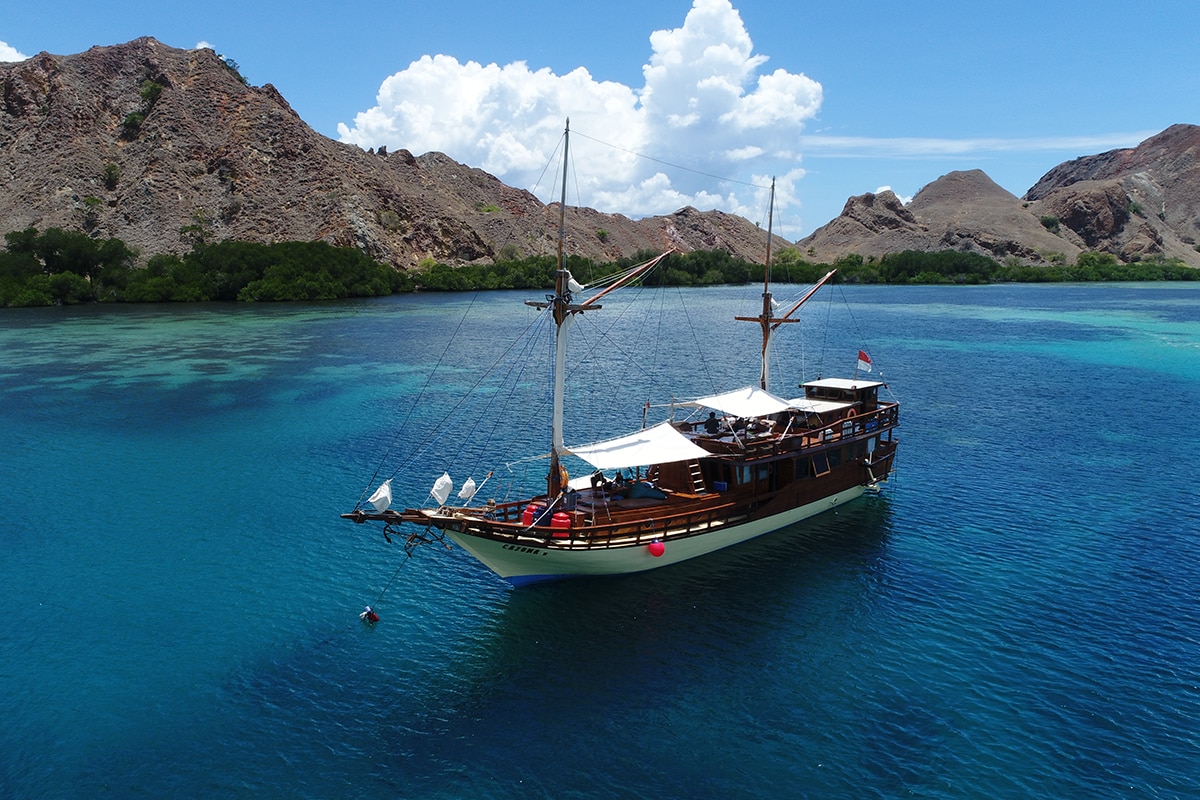
or some 3 hours away from the island of Rinca in the National Park, that with the island of
Padar are the last remaining habitat in the whole world of these prehistoric Komodo giant lizards.
Originally just a small fishing town, Labuan Bajo has grown by leaps and bounds in the last years since tourists came flocking to witness and get close to the one and only prehistoric living dragons.
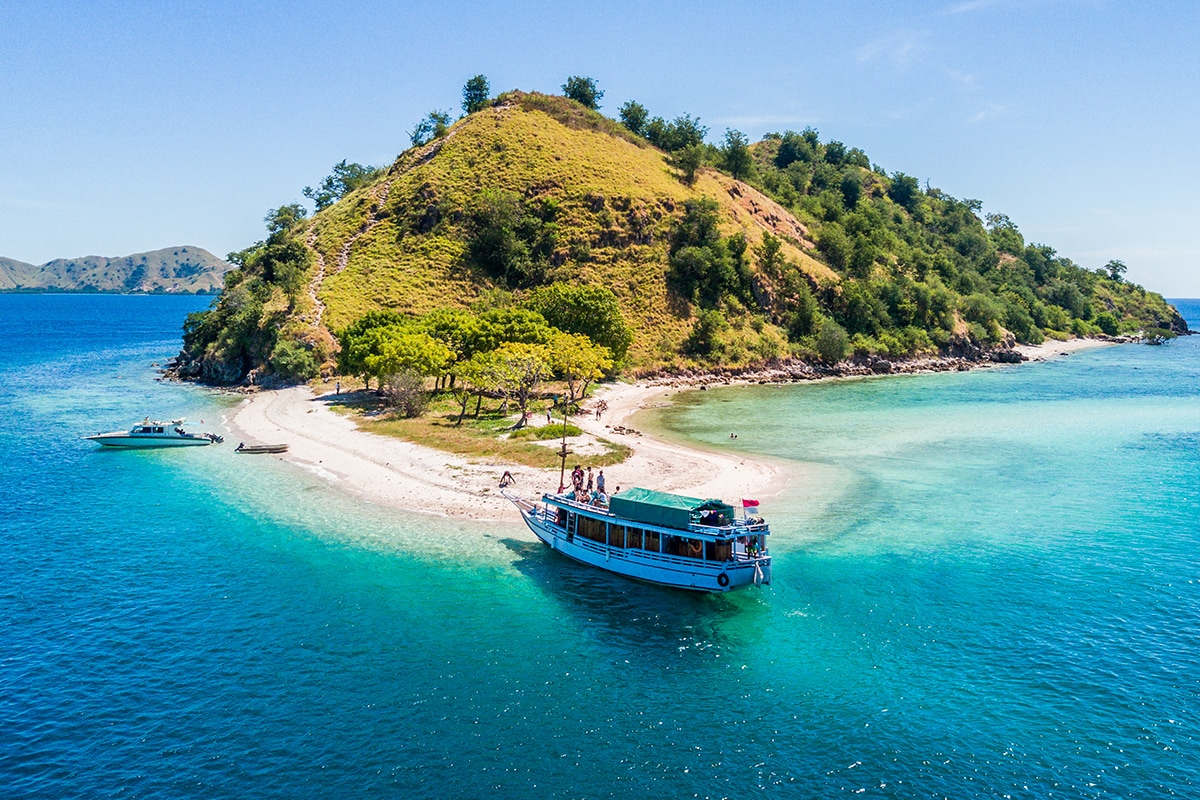
Moreover, tourists have also discovered in the National Park its breathtaking underwater paradise, playground of manta rays and huge turtles, its remote isolated islands fringed with white sands, and the rare Pink Beach. Even Russian tourists have come from the cold to witness the dragon firsthand and dive in the warm tropical waters of Komodo.
At the moment, Park authorities say that there are 2,762 Komodo dragons living in the National Park, which is slightly down from the 3,012 in 2016, however, this is still considered stable growth.
To meet the surge in tourist demand, the government has built a larger airport, named it the Komodo Airport, and allowed more domestic airlines to fly to Labuan Bajo from Jakarta and other Indonesian cities. It has also allowed cruise ships and yachts to berth here.

However, it soon became clear that tourist facilities and infrastructure in this town as well as in the Park have become sorely inadequate to meet the tremendous demand worldwide.
Visitors to Labuan Bajo and the Komodo Park has increased rapidly. In 2017, the number of international and domestic tourists numbered 120,000 up 11.04% compared to the previous year. For 2019, however, the government estimates that this number will jump to 500,000.
Therefore, to facilitate tourist arrivals on the one hand but at the same time protect the National Park and the most endangered Komodo dragons on the other,
as well as other sea creatures living here, the Tourism Authority was established to manage both the accelerating numbers of tourists visiting with consequences of mass arrivals, while at the same time protect the National Park’s most precious environment and inhabitants.

In this context, a number of infrastructure and tourist facilities are presently being constructed in and around Labuan Bajo, said Minister Arief Yahya, that include:
- A pedestrian walkway will be built along the coastal road at Jalan Soekarno-Hatta.
- A special culinary center will also be built at Kampung Ujung
- A green open area will be made at Kampung Air formerly used for the Sail Komodo regatta.
- An a bridge will connect Kampung Air with Pramuka Hill
- At sea, 20 mooring buoys will be placed around the Komodo National Park to avoid damage to coral reefs by anchorage of ships, boats, and yachts.
- To ascertain cleanliness of the area and surrounding seas the Ministry of the Environment has established a coordinated Garbage Disposal Management, whereby a Garbage Recycling Center will be built to support garbage disposal from the town of Labuan Bajo, at the Komodo National Park, and provide island garbage disposal management modeled after the one at Pulau Messa, as well as provide garbage ships.
- Whereas, to further meet the rapid surge in tourism demand, the Komodo Airport at Labuan Bajo is planned to be expanded into an international airport,allowing international airlines to land here direct. Construction is ongoing so that by 2019 next year the airport is expected to be ready to receive direct international flights.
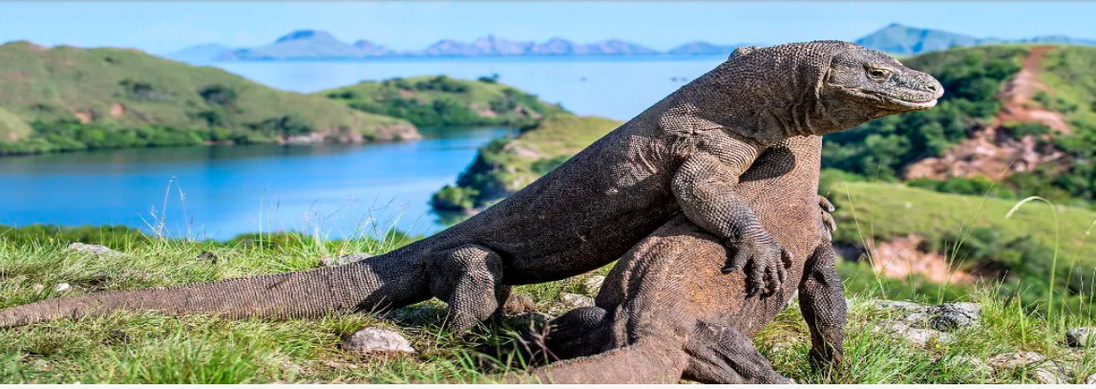
While other “critical success factors” for Labuan Bajo, according to Minister Yahya include:
- A rest area, a function hall and souvenir shop to be built at Puncak Waringin, for which the Ministry of Tourism has prepared its architectural design following Flores traditional architecture, and is planned for completion in 2019.
- The present Container harbor at Labuan Bajo will be moved to Bari harbor, to make way and to be replaced by a harbor specifically dedicated for cruise ships, tourism yachts, and boats.
But most importantly, the Authority is now in the process to assess the National Park’s Carrying Capacity. 11 dive spots have been identified, among which is Manta Point.
While for the protection of the rare dragon, coral reefs and other sea animals, regulations are in process of being drafted to determine the maximum number of visitors allowed at a given time and season and to manage visitors flow, to meet both tourist demand on the one hand and protect this unique Park and its inhabitants on the other.
For those on the waiting list to visit the Komodo islands, do know that the island of Flores itself is rich in natural beauty, waterfalls, and unique villages. In this district is also the Liang Bua cave where the prehistoric “hobbit”, the Homo Floresiensis was discovered.
Near Ruteng are the unique so-called spiderweb paddy fields, where instead of squares, the green fields are plotted in a concentric circle, following local wisdom. All are within a short distance from Labuan Bajo.
Preparing your trip to Komodo
For those wishing to visit Komodo, please note that there are NO accommodation facilities in the park itself except for a few simple ranger lodges.
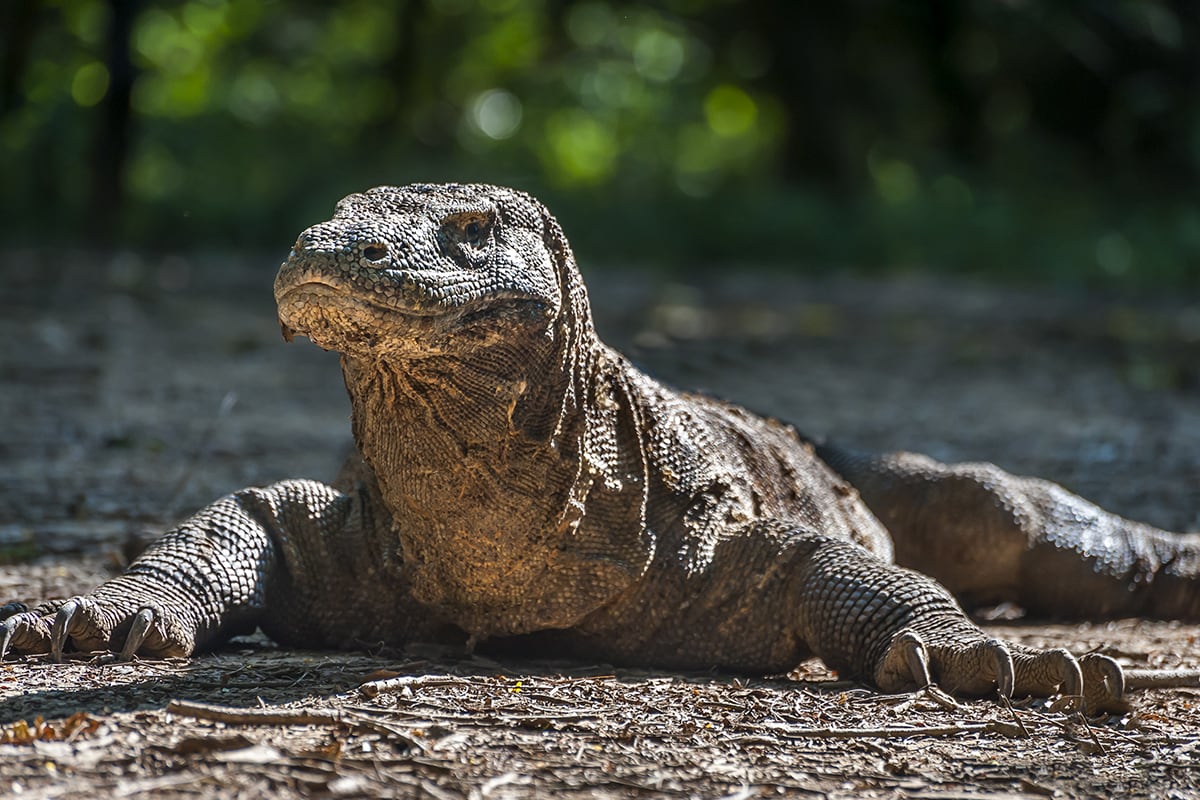
All food and drinks must be taken with you to the islands, and make sure NOT to leave any garbage. All rubbish should be taken home with you.If you wish to make a one day trip, it is only possible to visit Rinca Island which lies closer to Labuan Bajo.
Here you can easily meet Komodo dragons especially near the rangers kitchen, and trek around the island. But make sure to ALWAYS walk guided by a park ranger. Make sure to have all your provisions in Labuan Bajo. Meanwhile, Komodo island is over 4 hours away from Labuan Bajo, so if you wish to visit Komodo, Padar island and go diving, then best travel by liveaboard.
10. Pulau Morotai
Locals who still remember World War II would tell visitors that back in 1944-1945 Morotai was a hive of military activities with tens of sorties roaring daily from aircrafts taking off and landing at airstrips along Daruba Bay,endless stamping of thousands of military boots marching across the island, and navy ships anchoring daily carrying supplies and reinforcement. For Morotai back then, was the strategic base of the Allied Forces from which they attacked posts in the Philippines and Borneo in their fight against Japanese forces during World War II.
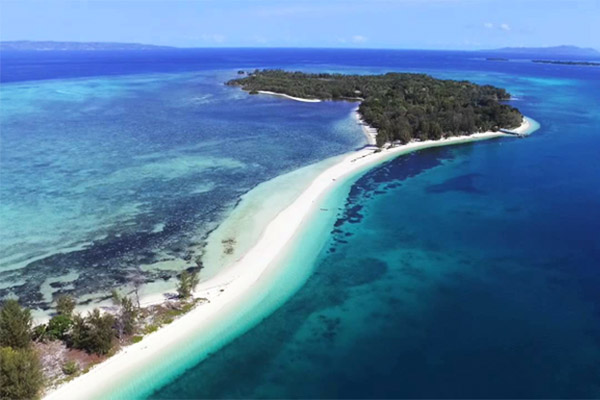
15 September 1944, Allied Forces from the USA and Australia under leadership of Supreme Commander for the West Pacific, General Douglas MacArthur, landed on Morotai’s south west corner, where some time before, the Japanese had constructed an airstrip but abandoned it in favor of the island of Halmahera to its south. In Morotai the Japanese command left only some 500 soldiers to guard the island. With such overwhelming odds, the advancing Allied Forces were no match for the small number of Japanese troops. The Japanese Navy later tried to recapture the island but also to no avail.
When the Japanese abandoned Morotai, Gen. MacArthur saw this as the golden window of opportunity to take the island which he considered was at the most strategic location for a counter invasion to recapture the Philipppines from the Japanese. With over 50,000 troops the Allied Forces settled on Morotai. Losing no time, Mac Arthur immediately constructed a number of airstrips over the rough coral ground. At one point,
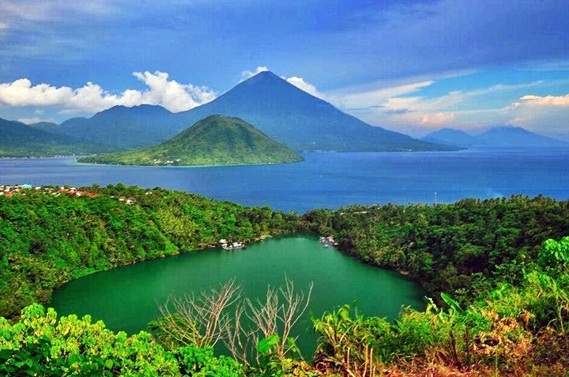
Morotai was said to house no less than 60,000 soliders, and had a large hospital with 1,900 beds. There was also a busy naval base nearby.
Later, Australian Forces also sortied from Morotai to stage attacks on North Borneo. This hive of activities continued until the end of World War II at the surrender of the Japanese in 1945. Before leaving the island, Allied Forces are said to have burnt down all constructions on Morotai.
In 1974 a lone Japanese soldier called Taruo Nakamura emerged from the jungles of Morotai having hidden there for decades unaware that the War was long over.
Today, Morotai has become a vague memory in the annals of World War II military operations in the Pacific Theater, and its role in the fight for freedom of the Philippines almost forgotten.
The island itself with a total population of 53,000 people is now back to its routine as sleepy tropical paradise. Nevertheless, its decisive role in World War II is forever etched in history books.
Now the government plans to make Morotai into an economic hub and gateway into Indonesia from the Pacific Ocean. Morotai will be developed as a fishery, tourist, trade and services center.
The island of Morotai has now been designated as one of Indonesia’s Top Priority Tourist Destination for intense resort development.
Where in the world is Morotai?
Located north of the larger island of halmahera in the province of North Maluku, the island of Morotai has a number of great beaches and interesting diving spots. The largest town here is Daruba in the south. To Morotai’s north are the Philippines, to its east the Pacific Ocean. Not much remains to be seen from those hectic World War II days, except for a number of interesting wrecks to be explored underwater.
A lone statue of General Douglas MacArthur on the island of SumSum near Daruba serves to remind following generations that this famous general, best known for his words “I will return”, once made Morotai his military base.
Nearby at Kao Bay in Halmahera a half submerged Japanese wreck named the Tosimaru can still be seen from shore.
A shack filled with memorabilia of World War II collected by a private citizen and known as the Morotai Museum can be visited to remind visitors of those terrible war days, which will hopefully never occur again on this planet.
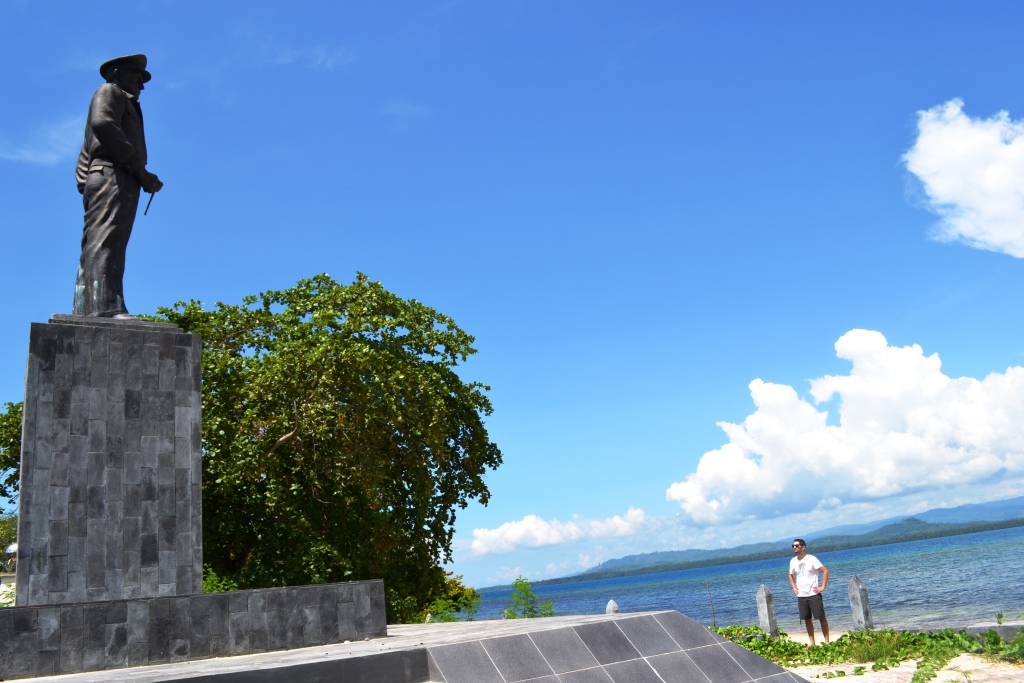
Besides serving as US and Australian military base in WW II, the island of Morotai later also served as base for Indonesian forces in the liberation of West New Guinea from Dutch colonization.
11. Taman Nasional Wakatobi
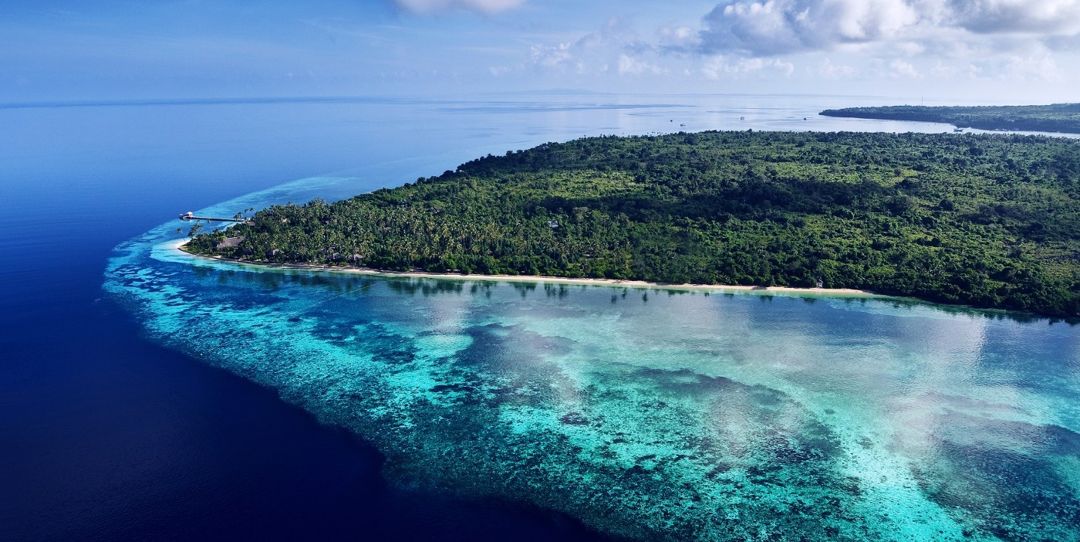
Now a National Marine Park covering the entire Wakatobi District, it comprises a total of 1.4 million hectares, of which 900,000 hectares are decorated with different, colourful species of tropical coral reefs. For Wakatobi is widely recognized as having the highest number of reef and fish species in the world. The islands are also famous as the largest barrier reef in Indonesia, second only to the Great Barrier Reef in Australia.
Here can be found fringing, atolls and barrier reefs and offer more than 50 spectacular dive sites easily accessible from the major islands. This is the habitat of large and small fish species, the playground of dolphins, turtles and even

whales. Wakatobi alone is said to have 942 fish species and 750 coral reef species from a total of 850 of world’s collection, which, comparing with the two world’s famous diving centers, the Caribbean Sea owns only 50 species with 300 coral reef species in the Red Sea, in Egypt.




